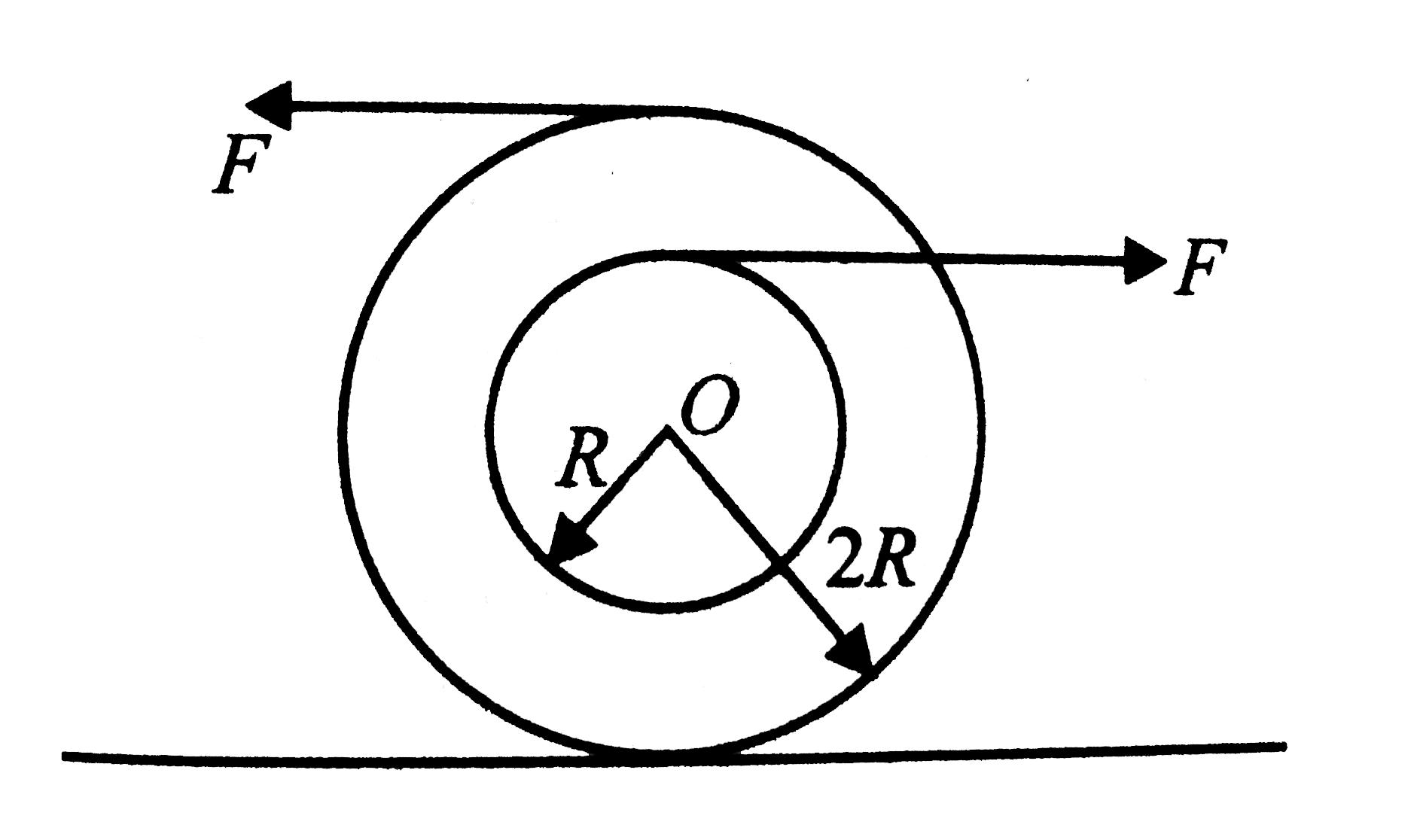A force fo 3000 dyne acts on a body of mass 400g for 10s. Find the kinetic energy of the body after 10s.
To find the kinetic energy of a body after a force has acted on it for a certain time, we can follow these steps:
Step 1: Convert the force from dyne to newton
Given:
- Force F=3000 dyne
We know that:
1 dyne=10−5 newton
So, we convert the force:
F=3000×10−5 newton=0.03 newton
Step 2: Convert the mass from grams to kilograms
Given:
- Mass m=400 g
We know that:
1 kg=1000 g
So, we convert the mass:
m=4001000 kg=0.4 kg
Step 3: Calculate the acceleration
Using Newton's second law:
a=Fm
Substituting the values we have:
a=0.03 N0.4 kg=340 m/s2
Step 4: Calculate the final velocity after 10 seconds
Using the equation of motion:
v=u+at
Where:
- Initial velocity u=0 (the body starts from rest)
- Time t=10 s
Substituting the values:
v=0+(340 m/s2)×10 s=34 m/s
Step 5: Calculate the kinetic energy
Using the formula for kinetic energy:
KE=12mv2
Substituting the values:
KE=12×0.4 kg×(34 m/s)2
Calculating v2:
(34)2=916
Now substituting back:
KE=12×0.4×916=0.4×932=3.632=980 joules
Final Answer:
The kinetic energy of the body after 10 seconds is 980 joules.
---
Given:
- Force F=3000 dyne
1 dyne=10−5 newton
F=3000×10−5 newton=0.03 newton
Given:
- Mass m=400 g
1 kg=1000 g
m=4001000 kg=0.4 kg
Using Newton's second law:
a=Fm
Substituting the values we have:
a=0.03 N0.4 kg=340 m/s2
Using the equation of motion:
v=u+at
Where:
- Initial velocity u=0 (the body starts from rest)
- Time t=10 s
v=0+(340 m/s2)×10 s=34 m/s
Using the formula for kinetic energy:
KE=12mv2
Substituting the values:
KE=12×0.4 kg×(34 m/s)2
Calculating v2:
(34)2=916
Now substituting back:
KE=12×0.4×916=0.4×932=3.632=980 joules
The kinetic energy of the body after 10 seconds is 980 joules.
Topper's Solved these Questions
- WORK, POWER AND ENERGYBOOK - SL ARORACHAPTER - WORK, POWER AND ENERGYEXERCISE - TYPE C Potential Energy of a Spring
4 Videos
- WORK, POWER AND ENERGYBOOK - SL ARORACHAPTER - WORK, POWER AND ENERGYEXERCISE - TYPE D Based of Power
13 Videos
- WORK, POWER AND ENERGYBOOK - SL ARORACHAPTER - WORK, POWER AND ENERGYEXERCISE - Problem for Self Practice
12 Videos
- Work, Energy and powerBOOK - SL ARORACHAPTER - Work, Energy and powerEXERCISE - EXERCISE
415 Videos
Similar Questions
Knowledge Check
A force 100 N acts on a body of mass 2 kg for 10 s. The change in velocity of the body is
A100ms−1B250ms−1C500ms−1D1000ms−1The momentum of a body of mass 200g with kinetic energy of 10 J is:
A3 kg m/sB2 kg m/sC5 kg m/sD0.33 kg m/sA uniform force of 4 N acts on a body of mass 40 kg for a distance of 2 m. The kinetic energy acquired by the body is
A460JB800JC320JD8J
A uniform force of 4 N acts on a body of mass 10 kg for a distance of 2.0 m . The kinetic energy acquired by the body is
View SolutionA force acts on the body of mass 50 kg, for 10 second. When the force stops acting on the body, the body covers 80 m in the next 10 second. What is the magnitude of the force?
View SolutionAt a place where the acceleration due to gravity is 10m sec−2 a force of 5 kg - wt acts on a body of mass 10 kg initially at rest. The velocity of the body after 4 second is
View SolutionIn the given figure F=10N,R=1m, mass of the body is 2kg and moment of inertia of the body about an axis passing through O and perpendicular to the plane of the body is 4kgm2. O is the centre of mass of the body.

If the ground is smooth, what is the total kinetic energy of the body after 2s?
View SolutionIf the force acting on a body is inversely proportional to its speed, the kinetic energy of the body is
View Solution
